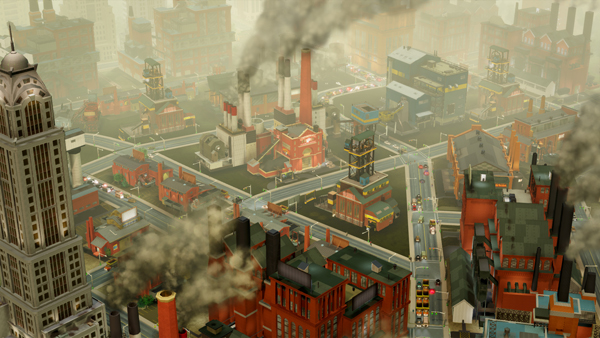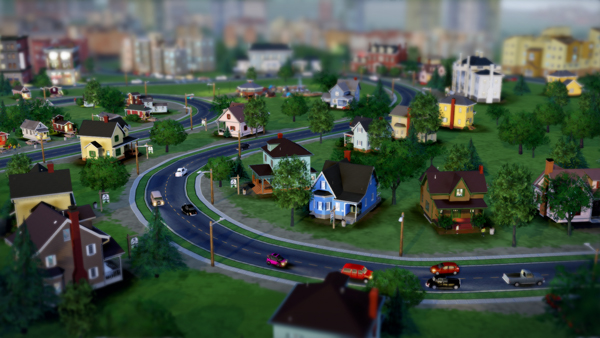SimCity is back.
Powered by the new GlassBox engine, Maxis is doing new and impressive things with the next entry in the developer’s 23-year-old franchise, from the way players’ cities interact with one another, right down to the individual sims, themselves.
Thanks to the new GlassBox simulation engine, recreating a city will no longer be a top-down process, where underlying statistics dictate the predetermined scenarios and canned animations the game presents to the player. Instead, the goals and actions of every single sim (or building), operating independently, will dynamically generate in-game events and situations, such as traffic jams, construction delays, or shifting crime rates. Production and progress will always be accurately represented to the player by GlassBox, with constant visible feedback on how the city is operating. SimCity will be a true population simulator.
Reaching further, Maxis is developing an asynchronous multiplayer system wherein multiple players’ cities will interact with each other in a wider “region view.” Each player will be able to see nearby cities, as well as shared goals between those cities. Such large-scale multiplayer projects called “Great Works” will be the driving force behind an always-on multiplayer system, in which players will rely on their neighbors’ strengths to achieve feats cooperatively.
Every city will specialize on specific facets of civilized living. One might be an industrial city, full of factories and jobs, but suffering from high crime and pollution. Another might focus on tourism, with hotels, restaurants, sports, and other entertainment venues dominating the skyline, and gridlock dominating the streets. Yet a third city-building strategy might be purely residential, forcing citizens to commute to work via region view.
It was exactly this setup that was presented to press at EA’s booth at E3. Co-op play between the three cities centered on the construction of an international airport, one of SimCity’s Great Works. In this scenario, an airport would offer jobs to the residential city, bring vacationers to the tourist city, and provide a market for the industrial city’s exports, such as steel and other alloys. Each city first had to reach specific, play-style-relevant goals, though, before finally building the Great Work and reaping its benefits.
There will be consequences related to this multiplayer setup, as well. In the above example at E3, members of the press watched as traffic backed up between residential and industrial cities, and as crime spilled over from the fringes of one minimally policed city to its neighbor. We even saw a bank robbery play out in real time, as the cops were apparently preoccupied by doughnuts and coffee. The symbiotic balance within and between cities looks to be very sensitive in this new, GlassBox-powered SimCity.
Players should prepare for a highly tactile, emergent play experience in their tilt-shift-inspired miniature cities when SimCity hits shelves next February for PC. It’s not just building anymore, but promises to be the pinnacle of simulation as gamers know it. And yes, there will be curved roads; Maxis knows you need them.




















